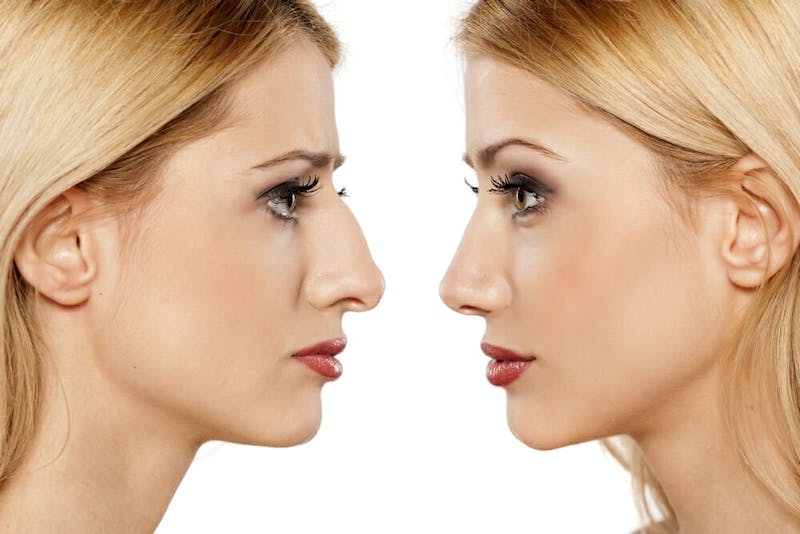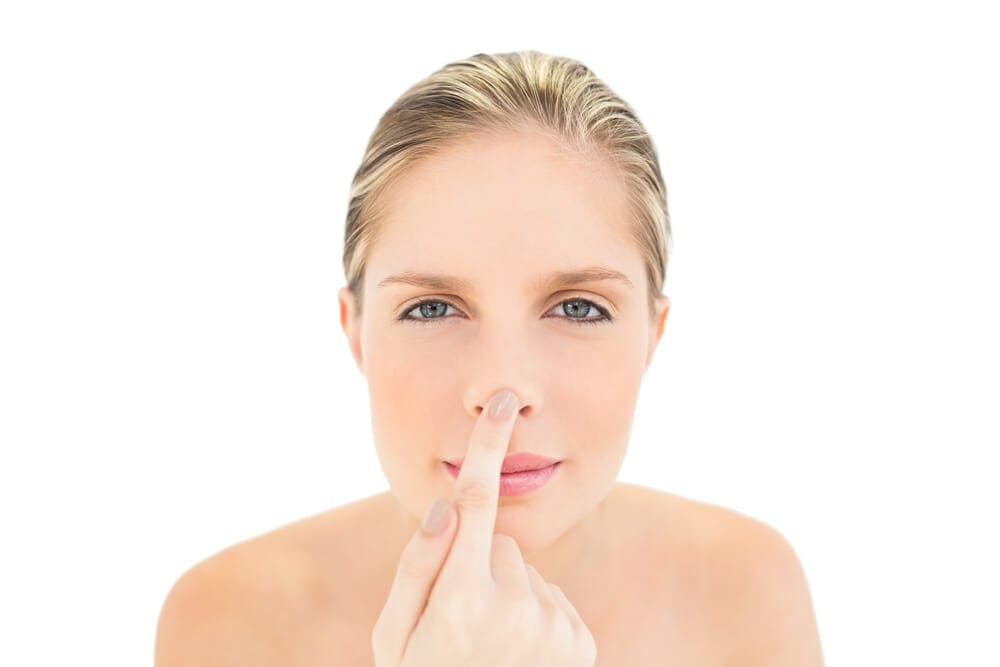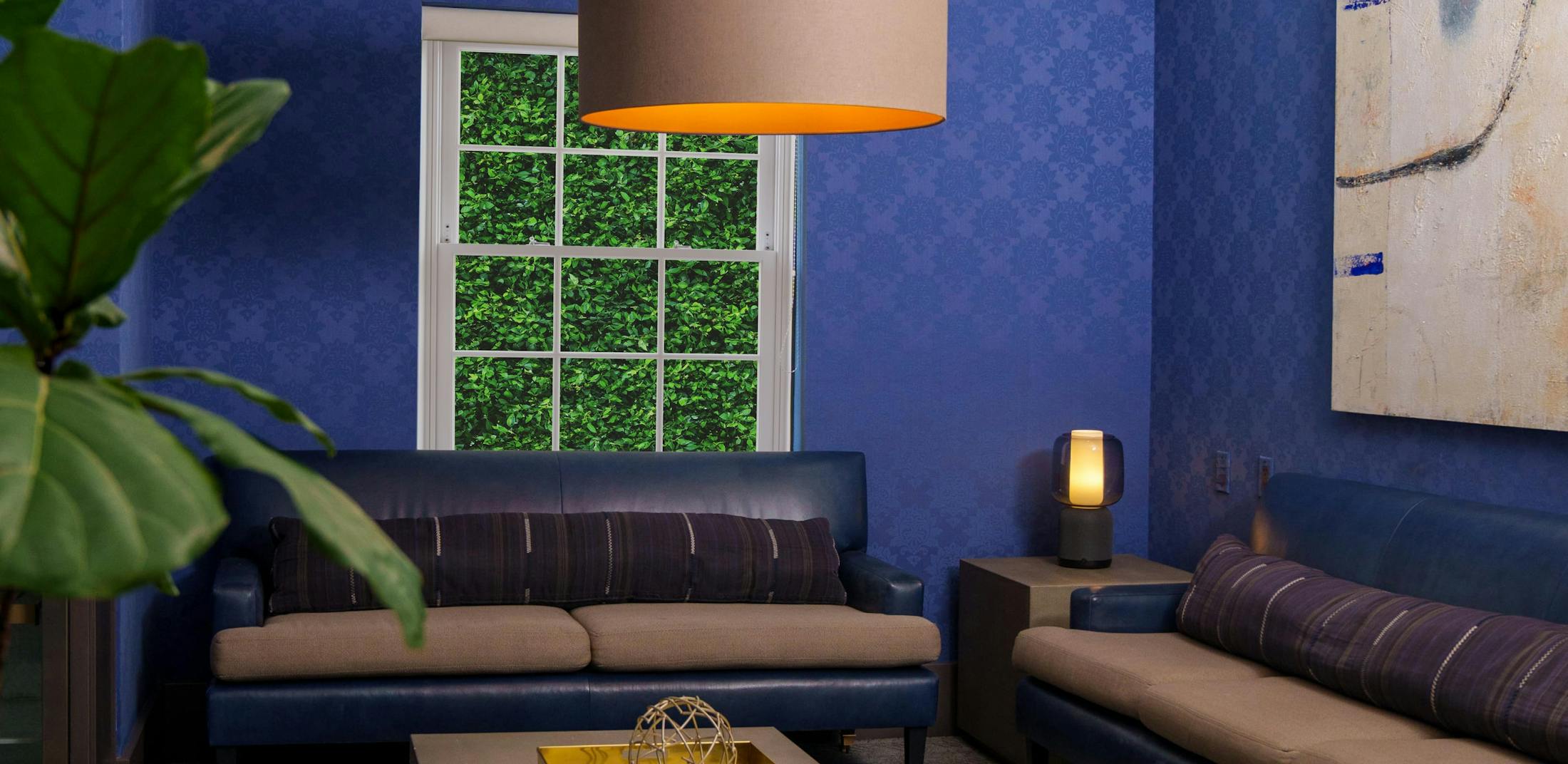
If you’re unhappy with the size or shape of your nose or experiencing difficulty breathing clearly, you may be a good candidate for rhinoplasty. Rhinoplasty, also known as a nose job, is a surgery that’s done to alter the shape or function of the nose. The procedure is one of the most popular cosmetic procedures performed in the country. Many factors can affect the shape, size, and structure of the nose, such as aging, injuries, genetics, hormones, and illnesses.
What Does Rhinoplasty Do?
The nose is made of bone and cartilage. Rhinoplasty involves altering the skin, bone, and cartilage of the nose to achieve the desired outcome. Common concerns that rhinoplasty can correct include:
- Reduce the size
- Widen or decrease the width
- Eliminate crookedness
- Improve the shape of the tip
- Remove bridge bumps and dents
- Reposition the nostrils
- Widen or decrease the size and shape of the nostrils
Due to its complexity, consultations are necessary so the surgeon can plan the procedure carefully. During a rhinoplasty consultation, the patients can expect to discuss their cosmetic or functional concerns, medical history, take several photos, and undergo a physical examination of their nose and face so the surgeon can determine the techniques and specifications necessary to provide the desired result. Diagnostics, such as lab work may also be necessary to determine suitable candidacy for the procedure. Patients will also receive instructions on how they can prepare for the procedure and the steps they should take to protect their results afterward.
Rhinoplasty Risks
Rhinoplasty is a surgical procedure that comes with risks, though the likelihood of them occurring is low.
- Bleeding
- Adverse reaction to medications or anesthesia
- Infection
- Loss of sensitivity in the nose
- Pain
- Swelling
- Inflammation
- Discoloration
- Bruising
- Scars
- Nerve damage
- Perforation of the septum
As with any surgical procedure, there is also the small possibility of an unsatisfactory outcome that causes unevenness or complications that facilitate the need for revisions.
What to Expect for Rhinoplasty?
 The procedure is often performed on an outpatient basis, there’s no hospital stay, though patients requiring an extensive amount of work may be scheduled as inpatient surgery. Outpatient procedures require a short stay under medical observation before discharge home. Outpatient rhinoplasty patients must have someone to accompany them to and from the clinic to drive them home afterward.
The procedure is often performed on an outpatient basis, there’s no hospital stay, though patients requiring an extensive amount of work may be scheduled as inpatient surgery. Outpatient procedures require a short stay under medical observation before discharge home. Outpatient rhinoplasty patients must have someone to accompany them to and from the clinic to drive them home afterward.
There are many techniques that the surgeon can use to improve the shape and structure of the nose. Before starting the surgery, anesthesia is administered to prevent the patient from feeling any pain or uncomfortable sensations during the procedure. The surgeon will determine the type of sedation or anesthesia and discuss those considerations with the patient at an earlier date. Depending on the type and amount of work needed, the surgeon will make small external incisions to access the inside of the nose or nostrils to revise the bone at the upper portion of the nose or the bone and cartilage in other areas.
After surgery, patients wear bandages on the inside and outside of their nose for a week or so and will need to take the following precautions until medically cleared by their surgeon.
- Sleep with the head elevated to prevent additional bruising and trauma to the nose and face. Many patients find sleeping is more manageable with extra pillows or a recliner chair. There may be some pain and uncomfortable sensations in the nose and surrounding areas, including around the eyes for several days to a few weeks. There may also be a slight increase in swelling. These concerns are manageable with proper hydration and the use of pain medication and tend to resolve slowly over the next several months.
- Some mild nasal bleeding and congestion are normal and may increase during the first few days after surgery and right after dressing removal. To prevent discomfort and help patients manage the discharge of blood and mucus, patients may wear a drip pad (gauze dressing) under the nose to absorb those fluids. The surgeon will provide instructions on when and how to replace the drip pad until it is no longer needed. Patients should avoid showers until the dressing has been removed from their noses.
- Strenuous activity is not advised for the first two months after the procedure. It is important to take extra precautions to avoid disrupting the nose while it’s healing to preserve the results. Though there is some residual swelling during the healing period, the average length of time it takes for the true and final shape of the nose to fully appear is one year.
- Patients are advised to refrain from blowing their nose to avoid disturbing the sensitive skin, cartilage and bone tissues. Smiling, laughing, and performing basic facial expressions that require the use of muscles in the nasal area may cause pain, so moderation is key.
- Avoid clothes or accessories that go over the head. Until it is properly healed, any slight blows or touches to the nose can negatively affect the results of the surgery. Patients should also avoid wearing eyeglasses or placing anything on the nose to prevent indentations and bruising from the weight and pressure.
- Patients should also consider watching their diet and increasing their water and fiber intake to prevent constipation and help speed up the rate of swelling reduction. During recovery, patients can expect to have several follow-up visits with the surgeon for him to assess his work and to ensure that their nose heals properly and the desired outcome is achieved.
Keep in mind that rhinoplasty is different for everyone. Results vary and are unique. Some patients take longer to completely heal and see the final results of their nose job. Normally the nose gradually changes shape with age which brings about insecurities and dissatisfaction with one’s appearance. Rhinoplasty is a popular solution to restore one’s satisfaction with their facial aesthetics.
To learn more about rhinoplasty, contact us today to schedule a consultation.

